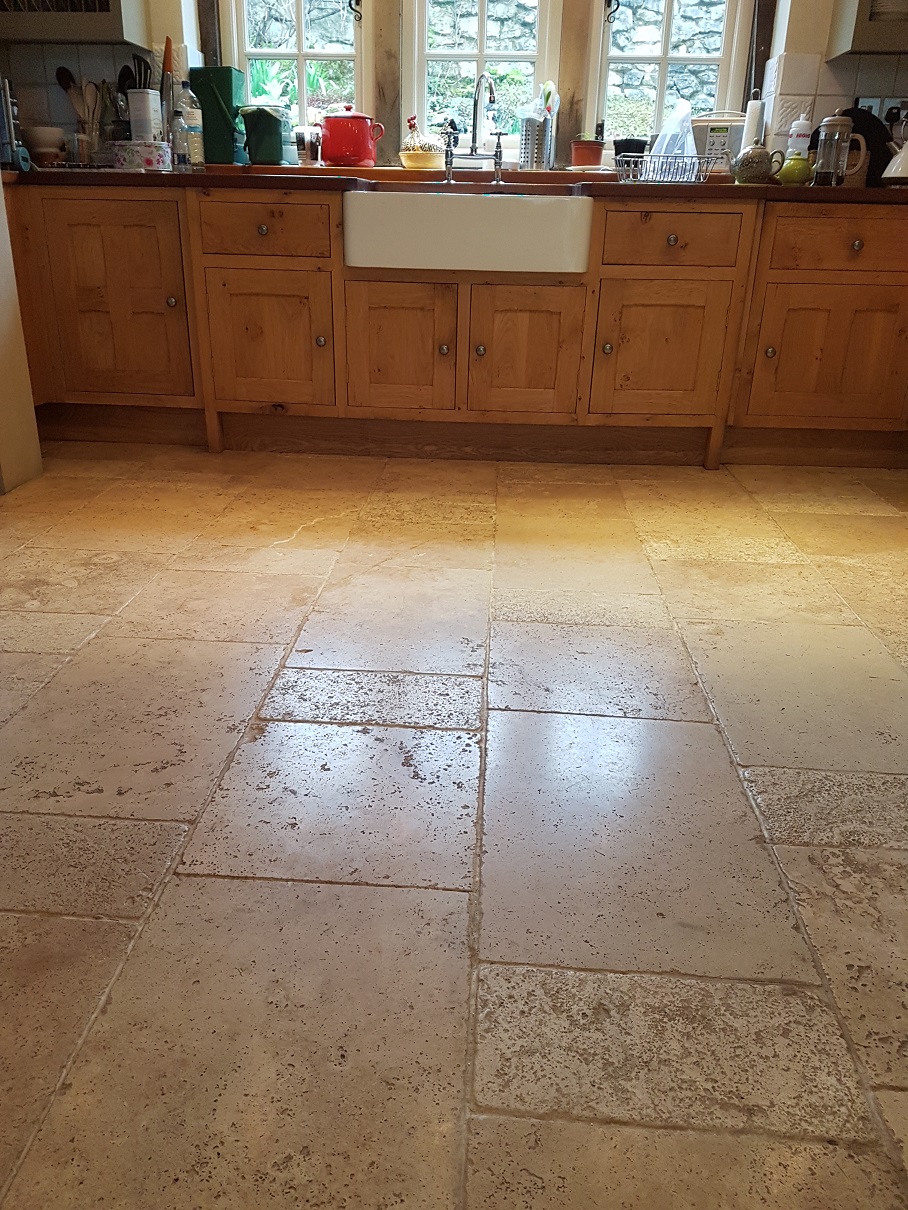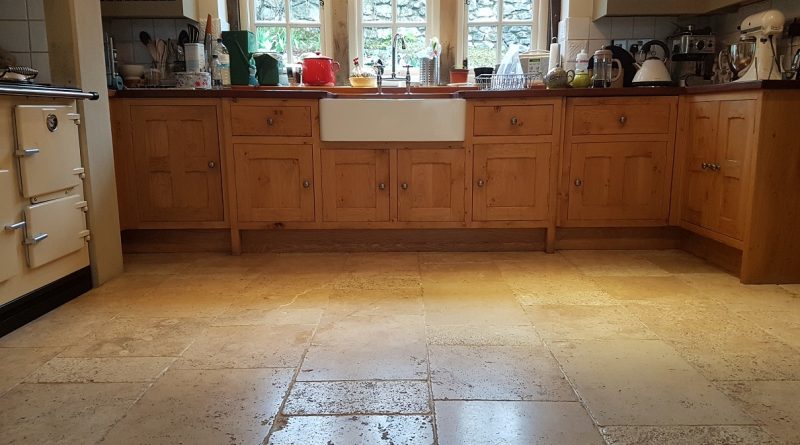Travertine Tiled Kitchen Floor Renovated in Parwich, Derbyshire
A few years ago, my client moved into a house in the village of in Parwich which sits in the Derbyshire Peak District. They had good methods for cleaning but complained that the Travertine tiled kitchen floor never actually looked clean afterwards. The main problems were the grout and the holes in the Travertine tiles both of which attracted dirt and proved difficult to clean effectively.

Ideally, they would like the Travertine to have a sheen finish, so I went over to take a look, discussed what treatment could be done to get the floor looking its best and showed them some examples. We also discussed the different types of sealers that could be applied to protect the floor once it had been cleaned. They were happy for me to do the work, so we agreed a date for my return.

Deep Cleaning and Polishing Travertine Kitchen Tiles
When I returned my first task was to add protection to the beautiful wooden kitchen, so it wouldn’t get splashed during the cleaning process. Once that was done I set about burnishing the stone floor with a set of diamond encrusted pads fitted to my rotary buffer machine running as slow speed. I started with the coarse 400-grit pad lubricated with water and then after running it over the whole floor I rinsed off the resultant residue with water which was then extracted with a wet vacuum.
The next step was to get the grout clean and for this a ran a strong dilution of Tile Doctor Pro-Clean along the grout lines and then scrubbed it in by hand using a stiff grout brush until I was happy with the result. Pro-Clean is our go to product for grout cleaning and being alkaline based its safe to use on all types of tile and stone. The now soiled cleaning solution was rinsed off with water and then extracted as before using the wet vacuum.
This burnishing process was then continued using an 800-grit and then a 1500 grit burnishing pads, again with water to help lubricate. These medium and fine pads slowly start to build the polish back on the stone and close the pores. As before water was used to rinse off the residue and the vet vacuum used to get the floor as dry as possible afterwards.
The last pad in the set of four Burnishing Pads is the very fine 3000-grit pad and this pad is applied dry with a small amount of water sprayed onto the floor as you go, we call this process a spray burnish and it really adds the nice subtle sheen the customer was looking for.
Sealing a Travertine Tiled Floor
The last step in the renovation process was to seal the floor with a suitable sealer which will protect the Travertine from staining going forward and make the floor much easier to clean.
Having discussed sealers with the customer at the beginning the choice was clear and two coats of Tile Doctor Ultra Seal were applied to the floor. Ultra-Seal is a premium product that soaks into the pores of the stone protecting it from within but without enhancing the look of the stone in anyway.

It’s probably difficult to appreciate the full difference from the photographs above by my customer was very happy with the improvement and they now have the floor looking the way they wanted.

Source: Travertine Tile Cleaning and Polishing Service in Parwich, Derbyshire
